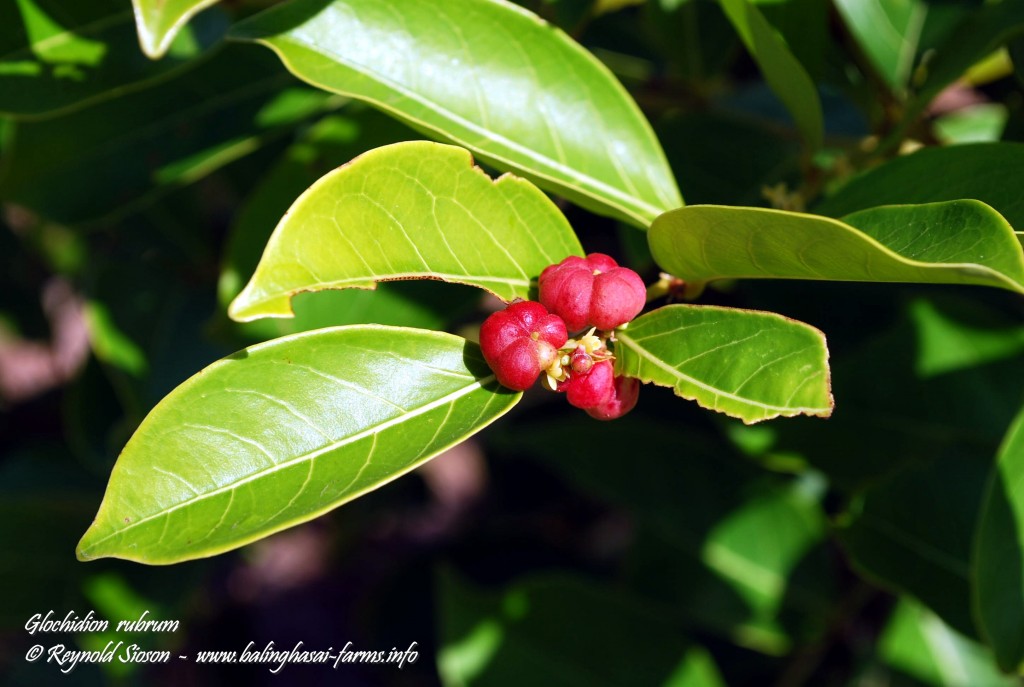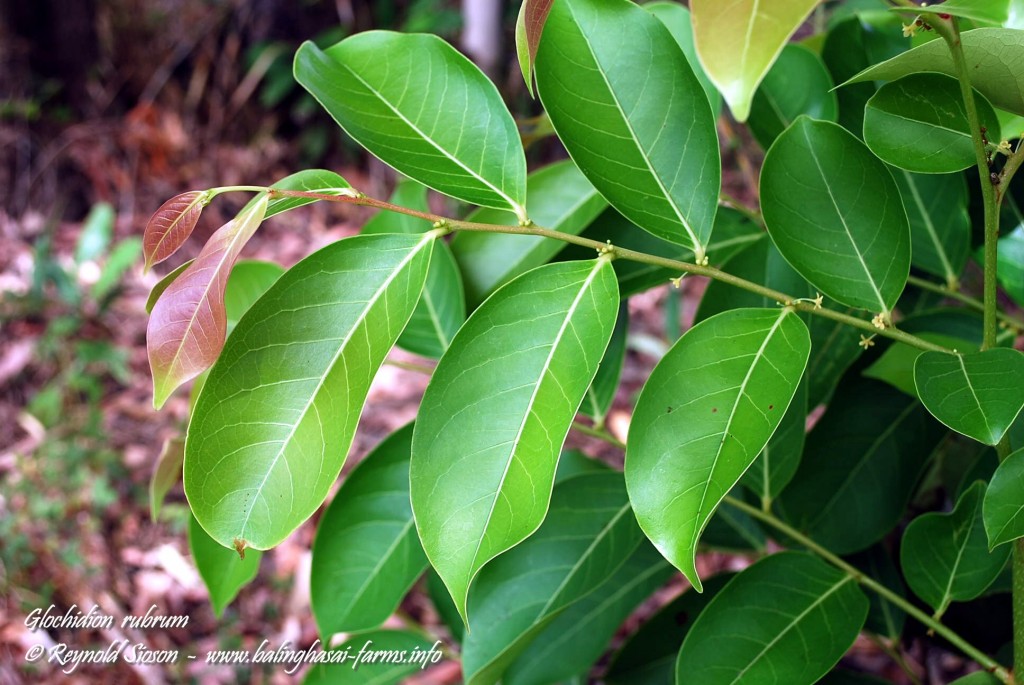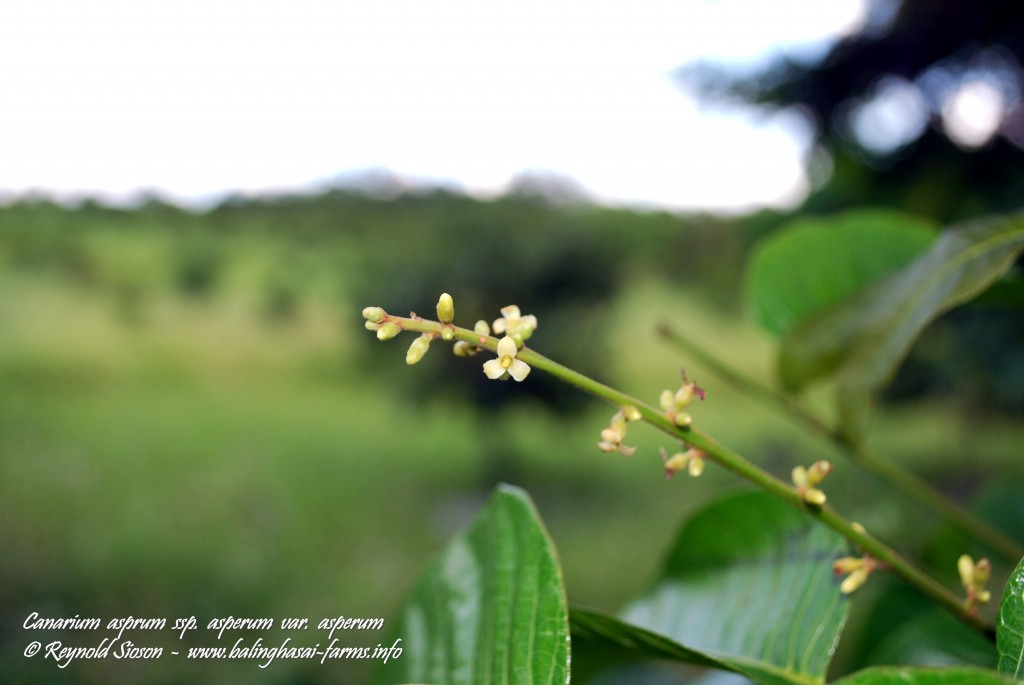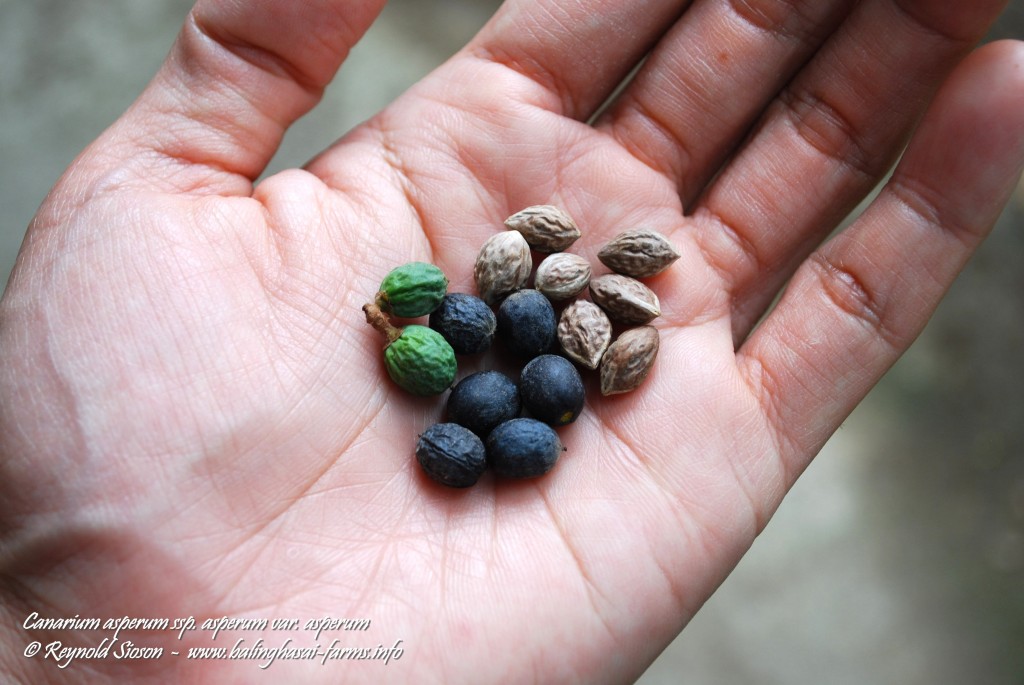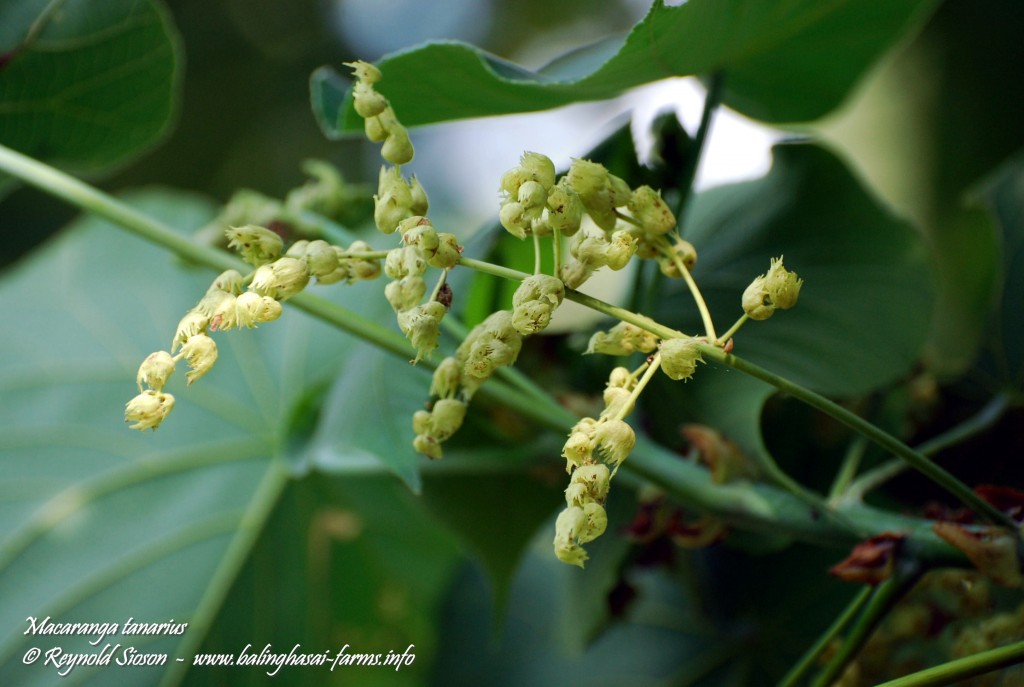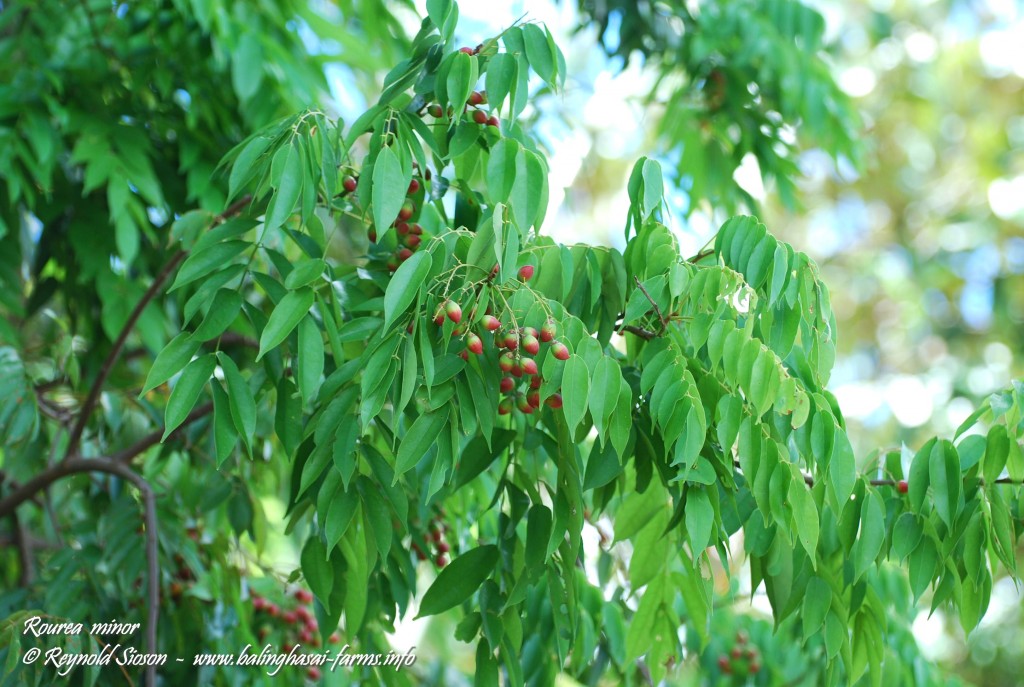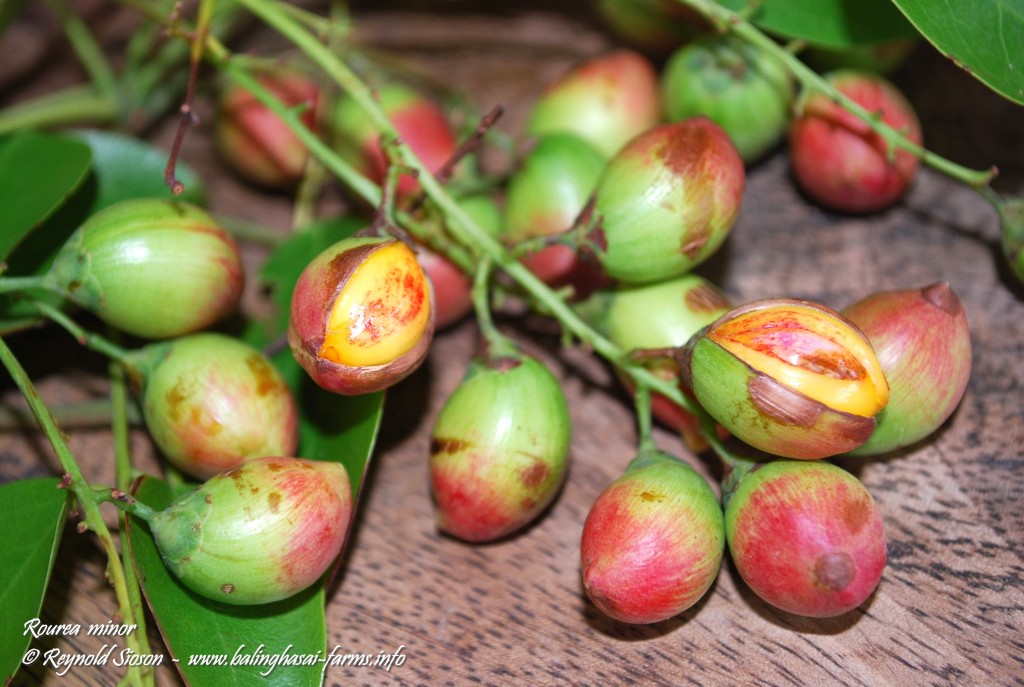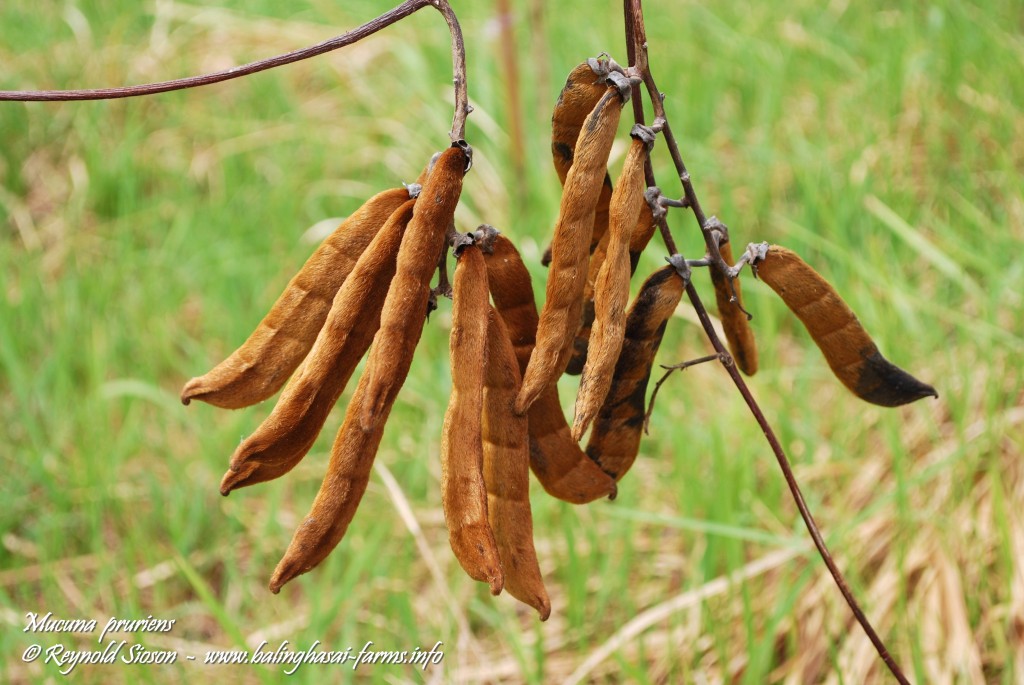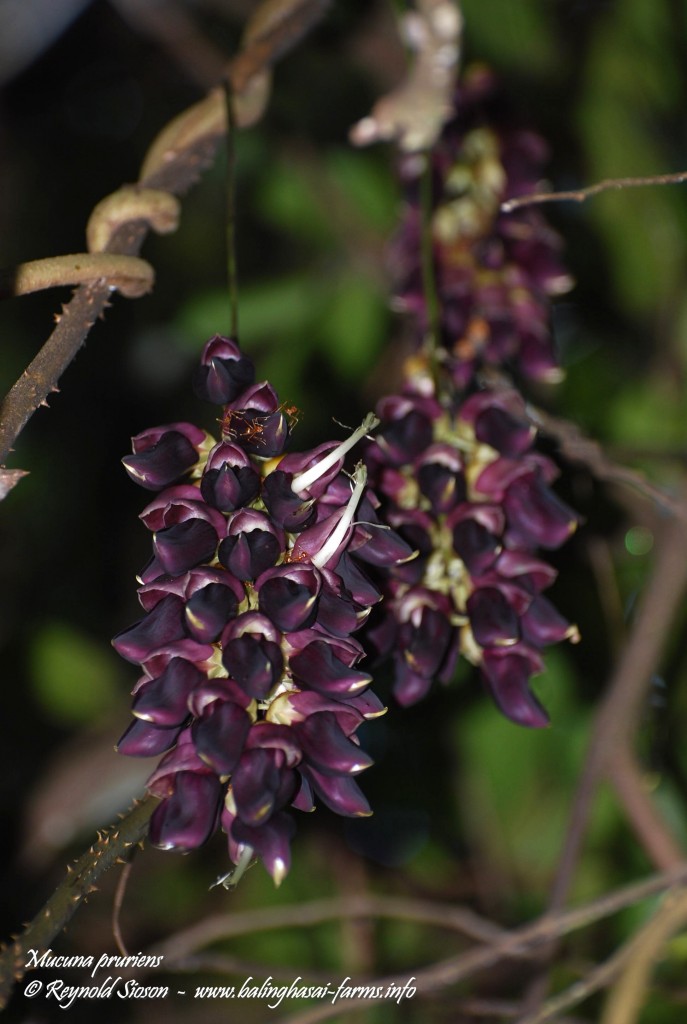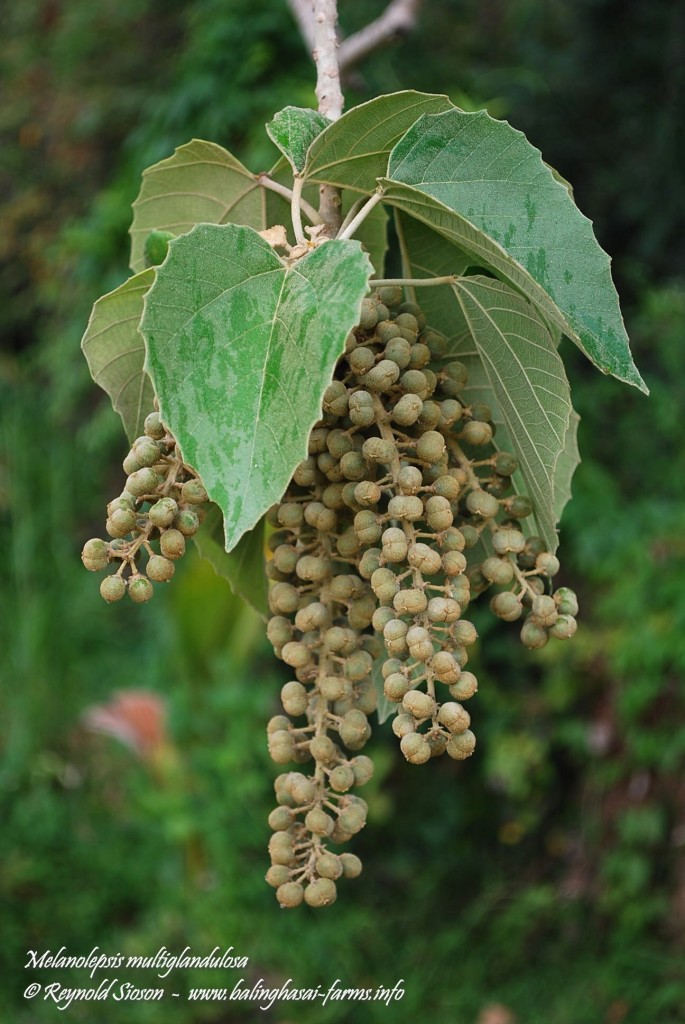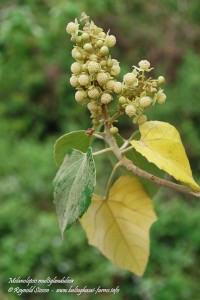Someone who would see a Balinghasai tree for the first time would instantly think that it’s just some kind of a Mango tree - that’s what I thought it was in 2008 when I first saw one in wooded section of the old farm. The leaves look exactly the same and the flowers have unmistakable resemblance. Somehow though, something didn’t matched-up - the size, the form, the reach of the branches - so I wasn’t totally convinced. Then on a vacation in Panglao island in Bohol in 2009 I got the chance to see a few trees in fruit; the trees were weighed down with clusters of small, blackish or purplish fruits that the resort attendant said are picked and eaten like ordinary berries by the locals. I tried one myself but I didn’t enjoy the taste, or probably the lack of it. Maybe there are trees that bear sweeter fruits?
Just recently, we discovered that our creek and adjoining smaller tributaries are home to juvenile Balinghasai trees. Large ones were cut down years ago - fallen victims to wood poaching and charcoal making but there are few remaining decent-size trees in nearby thickets. The one I saw in 2008 has been one of the unguarded victims, it wasn’t there anymore when we came back to check for fruits…. the hapless tree was gone but its name stays in this farm.

 Specimen : Wild trees
Specimen : Wild trees
Habitats : Mangrove swamps, sandy beaches, creek bank thickets, open grasslands
Local names : Balinghasai, Malamangga, An-an
Trade name : Sparrow’s mango
Botanical name : Buchanania arborescens
Family : Anacardiaceae
Height : 6-8 meters
Fruiting season : Possibly year round

 Traits : Drought tolerant; Evergreen; Fast growing; Salt spray tolerant; Small to medium-sized tree; Tolerant of infertile soil; Water-logging tolerant; Wind hardy
Traits : Drought tolerant; Evergreen; Fast growing; Salt spray tolerant; Small to medium-sized tree; Tolerant of infertile soil; Water-logging tolerant; Wind hardy
Recommendations : Agroforestry; Coastal stabilization; Erosion control; Farms; Fruit collector’s; Living fence; Nurse tree; Mangrove management; Pioneer species for reforestation purpose; Public spaces; Riparian management; Roadside tree; Timber plantationst; Urban greening; Wildcrafting; Windbreak
Used for : Fruits edible; Timber for light constructions, interior works, veneer, plywood, furnitures and novelties; Pulpwood; Firewood and charcoal
Native range : Andaman Islands, Southeast Asia (including the Philippines),  Australia and nearby Pacific islands
Australia and nearby Pacific islands
National conservation status : Not threatened in the Philippines
Threats : Clearing of woodlands for agricultural, commercial or residential use; Indiscriminate cutting of wild trees for charcoal and fuelwood production
Further readings :
Philippine Woods : Principal Uses, Distribution & Equivalent Woods in Asia Pacific (A. Ella, A. Tongacan, R. Escobin & F. Pitargue)
Revised Lexicon of Philippine Trees (J. Rojo) (853)
 Used for : Firewood and charcoal
Used for : Firewood and charcoal